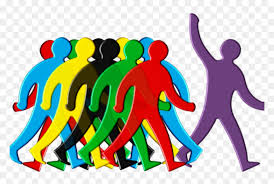Kuondoa Vizuizi vya Ujinga: Kubadili Mtazamo na Kuendeleza Maarifa

Updated at: 2024-05-25 15:57:18 (11 months ago by SW - Melkisedeck Shine)
Kuondoa Vizuizi vya Ujinga: Kubadili Mtazamo na Kuendeleza Maarifa
Maisha ni safari ndefu yenye changamoto na mafanikio, na njia ya kufikia mafanikio hayo ni kubadili mtazamo na kuendeleza maarifa. Hata hivyo, mara nyingi tunakumbwa na vizuizi vya ujinga ambavyo vinatuzuia kufikia uwezo wetu kamili. Hivyo, kama AckySHINE, mtaalamu wa mawazo na fikra chanya, ningependa kushiriki nawe njia za kuondoa vizuizi hivyo.
-
Fikiria chanya 🌟: Fikra chanya ni msingi wa kubadili mtazamo wako. Unapofikiria chanya, unaweka akili yako katika hali ya kupokea maarifa na fursa mpya.
-
Jenga tabia ya kujifunza 📚: Kuendeleza maarifa kunahitaji jitihada za kujifunza. Jifunze kila siku kupitia vitabu, makala, au kwa kushiriki mafunzo na semina.
-
Tafuta msaada wa wataalamu 💼: Huna haja ya kufanya kila kitu peke yako. Katika safari yako ya kuendeleza maarifa, shirikiana na wataalamu katika eneo lako la uchaguzi. Watakusaidia kukupa mwongozo na ushauri unaohitajika.
-
Simamisha kujilinganisha na wengine 🚀: Kila mmoja wetu ana uwezo na vipaji tofauti. Usijitafute kwa kulinganisha mafanikio yako na wengine. Badala yake, jitahidi kuwa bora zaidi kuliko ulivyokuwa jana.
-
Jifunze kutokana na makosa yako 🙌: Hakuna mtu aliye mkamilifu, na kila mmoja wetu hufanya makosa. Badala ya kuogopa kufanya makosa, tazama kama fursa ya kujifunza na kukua.
-
Weka malengo na mikakati 📝: Kuendeleza maarifa kunahitaji mipango thabiti. Weka malengo yako na ubuni mikakati ya kufikia malengo hayo. Kwa mfano, ikiwa unataka kuwa mtaalamu katika uwanja fulani, weka malengo ya kujifunza na kuendeleza maarifa yako katika uwanja huo.
-
Jenga tabia ya kusoma vitabu 📖: Vitabu ni chanzo kikubwa cha maarifa. Jenga tabia ya kusoma vitabu mbalimbali ili kupanua ufahamu wako.
-
Jifunze kutoka kwa wengine 🤝: Kuna watu wengi waliofanikiwa katika maeneo mbalimbali. Tafuta mifano ya watu hao na jifunze kutokana na uzoefu wao. Fanya mazungumzo na wataalamu katika eneo lako la uchaguzi na uulize maswali.
-
Panga wakati wako vizuri ⏰: Wakati ni rasilimali muhimu katika safari yako ya kuendeleza maarifa. Panga wakati wako vizuri na kuweka vipaumbele ili kufanikisha malengo yako.
-
Jiunge na vikundi vya kujifunza 🌐: Kuna vikundi vingi vya kujifunza ambavyo vinatoa fursa ya kubadilishana maarifa na uzoefu. Jiunge na vikundi hivyo na shirikiana na watu wenye malengo yanayofanana na yako.
-
Tambua vizuizi vyako 🚧: Ili kuwa na mtazamo chanya na kuendeleza maarifa, ni muhimu kutambua vizuizi vyako. Je, ni hofu, ukosefu wa ujasiri, au kutokuwa na nidhamu? Jitahidi kuvishinda vizuizi hivyo ili uweze kuendelea mbele.
-
Jifunze lugha mpya 🗣️: Kujifunza lugha mpya kunakuza ufahamu wako na kukufungulia fursa mpya. Kwa mfano, kama unajifunza Kiingereza, utaweza kusoma vitabu na makala zaidi na kuwasiliana na watu kutoka tamaduni tofauti.
-
Weka mazingira mazuri ya kujifunza 🏢: Mazingira yanaweza kuathiri mtazamo na uwezo wako wa kujifunza. Jenga mazingira mazuri ya kujifunza kwa kujenga ukumbi wa kusomea au kujitenga na vyanzo vya mshirika wako.
-
Kuwa na mtazamo wa shukrani 🙏: Kuwa na mtazamo wa shukrani kunakuza nidhamu ya kujifunza na kukufanya uweze kufurahia safari yako ya kuendeleza maarifa.
-
Jitathmini mara kwa mara ✅: Mara kwa mara, jitathmini maendeleo yako na fanya marekebisho yanayofaa. Hakuna njia moja ya kufikia mafanikio, hivyo ni muhimu kujifunza na kubadilika.
Kwa kumalizia, kuondoa vizuizi vya ujinga ni njia ya kubadili mtazamo na kuendeleza maarifa. Kwa kufuata vidokezo hivi, utaweza kupata uwezo wako kamili na kufikia mafanikio unayoyatamani. Je, umeshawahi kufuata vidokezo hivi? Je, una vidokezo vingine vya kuondoa vizuizi vya ujinga? Natamani kusikia maoni yako!









